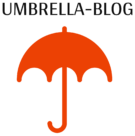We visited the Normandy city of Rouen a cold winter weekend by car from Paris, straight down the autoroute A13. The journey can also be made by train from Gare Saint-Lazare.

The capital of Normandy
France is divided into regions, and further subdivided into departments. In 2016 the map was simplified and larger regions were created. So the new region of “Normandie” subsumed the previous regions of Basse Normandie (“lower Normandie” – rather confusing since it lies further north) and “Haute Normandie”. The capital of Haute Normandie was Caen, and Rouen was capital of Basse Normandie, but is now nominated the capital of Normandie as a whole. Despite these new regions, I’m sure we will continue to refer to the older regions for some time to come (just as we will continue to spell onion “oignon”, even if in 1990 the Académie Française told us to spell it “ognon”!)

The Seine and the coast of Basse Normandie
The Seine meanders through Basse Normandie, and spills out into the sea at the port of Le Havre. The coastline of Basse Normandie is known for its high chalk cliffs, and especially the picture-postcard cliffs at Etretat. Châteaux and abbeys were built along the banks of the river during the Middle Ages. More recently Le Havre and Rouen became centres of industry.
The Cathedral
The famous Cathédrale Notre-Dame de Rouen which dominates the city can be described as “Romano-Gothic”. “Romanesque” because construction was started in the 11th century, but it’s mainly Gothic and the Gothic structure was completed around 1250. However, Cathedrals are regularly smitten by fires, lightening and storms and Rouen Cathedral was no exception. So many parts of it have been renovated or rebuilt throughout the centuries. The very latest incidents were the great storm of 1999 which carried away one of the turrets, and a fire which broke out last year in 2024.
The Cathedral had a particularly unhappy time of it during the Second World War. It was first bombed in 1940 by Germany during their invasion of France. And then in 1944 it was bombed again, this time by the Allied Forces! Much of northern France at that time was under German occupation, and cities like Rouen were strategic points of supply lines. The Allies started retaking France following the landings in Normandy on June 6th 1944, and they bombed bridges and railways at this critical time to disrupt German movements, and the Cathedral was collateral damage. Rouen was liberated at end of August 1944, shortly after the bombing.

The Cathedral’s design
Rouen’s Cathedral follows the classic plan. You enter at the West side, either through the main door or through porches to the left or right. You can then look all the way down the Nave, flanked on each side by aisles, to the Choir and High Altar at the far East end (towards the rising sun, being a symbol of the resurrection). And just before the Choir we have the perpendicular “Transept” representing the short horizontal arm of the cross. The spire rises above the point where these two axes meet. Within such a big structure there are lots of small alcoves which are used as chapels. Looking behind you, the huge rose window shines down from the top of the western wall above the organ pipes.
The ceiling is high and diagonal rib vaults cover the ceiling. These high arches sit on pillars. To avoid these pillars being pushed outwards by the weight, “flying buttresses”, one of the hallmarks of Gothic architecture, stablise the building from the outside. Later Renaissance-style buildings favoured domes and rounded arches, dispensing with the need for these ugly features which can make these buildings look like peculiar giant bugs. Gargoyles are another Gothic feature, the true practical purpose being simply to channel the rain water away from the walls.




Churches
The city is full of churches and chapels every way you turn.


Timber-framed houses
The picturesque timber-framed houses (“maisons à pan de bois” in French) from the Medieval and Renaissance times really make the city and are remembered by all who visit.
This first photo below is of the famous “gros-horloge” in the heart of the city, a clock spanning a beautifully preserved Renaissance archway.






Monet
The impressionist famously painted a series of a few dozen studies of the main west façade, all from the same angle but over the span of a couple of years and at different times of day.

The Musée des Beaux-Arts is free and worth a quick visit. It houses sculptures and second-rate paintings but there’s a small collection of impressionist works (Monet, Manet, Pissarro, Morisot), and there’s a Modigliani too.
Flaubert et al
Flaubert was born in Rouen, and the horse-drawn carriage in which Madame Bovary enjoyed herself with Rodolphe Boulanger trundled around the streets of Rouen. There’s the inevitable Flaubert museum which might be worth a visit (we didn’t have time). Maupassant was also born in the region, and many of his works have Rouen as backdrop. Corneille, author of classical tragedies like Le Cid, was an earlier resident.
Jeanne d’Arc
I learnt more about this key figure of English and French history by visiting the Musée Jeanne d’Arc and following their well-made presentation. After her trial of 1431 under the authority of the English, in which she was accused of heresy, witchcraft and cross-dressing, she was burnt at the stake at only 19 years of age. It made me feel ashamed of this politically motivated trial, and indeed the whole of the 100 years war.

Around Rouen
The Abbaye de Jumièges stands in ruins but from the photos really looks worth seeing (if you have a car, or if you rent a bike there in the summer) – perhaps we’ll visit it next time. On the way home we looked back over the city from the Côte Sainte Catherine.




Interesting read – keep them coming!